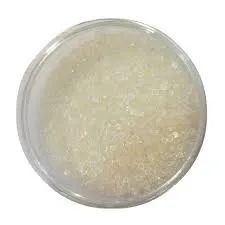Chemicals Used to Treat Drinking Water
Access to clean and safe drinking water is essential for public health and well-being. Water treatment processes utilize various chemicals to ensure that water meets health standards before distribution to households and communities. Understanding these chemicals and their roles in water treatment can improve awareness of water quality issues and the steps taken to protect human health.
1. Coagulants
Coagulation is often one of the first steps in the water treatment process. Coagulants are chemicals that help remove suspended particles from water. Common coagulants include aluminum sulfate (alum) and ferric chloride. When these chemicals are added to water, they cause tiny particles to clump together (or coagulate), forming larger aggregates known as flocs. These flocs can then be removed from the water by sedimentation or filtration. This process is crucial for improving water clarity and reducing the load of various contaminants.
2. Disinfectants
Disinfection is another vital step in treating drinking water, aimed at eliminating harmful microorganisms. Chlorine is the most widely used disinfectant due to its effectiveness and cost-efficiency. However, chlorine can form potentially harmful byproducts, leading to concerns over its long-term safety. Alternative disinfectants, such as ozone and ultraviolet (UV) light, are also gaining popularity. Ozone is a powerful oxidant that can destroy bacteria and viruses, while UV treatment uses light to inactivate pathogens without adding chemicals to the water, helping preserve the taste and odor of drinking water.
3. pH Adjusters
The pH of water plays a crucial role in its treatment and suitability for consumption. If the water is too acidic or too alkaline, it can corrode pipes or interfere with the effectiveness of disinfectants. Lime (calcium hydroxide) is commonly used as a pH adjuster to raise acidity levels, while sulfuric acid or sodium carbonate may be used to lower pH. Maintaining an optimal pH range (typically between 6.5 and 8.5) is essential to ensure the water is safe and pleasant to drink.
chemicals used to treat drinking water

4. Flocculants
Flocculants are chemicals that enhance the aggregation of particles and support the flocculation process initiated by coagulants. Polyacrylamide and other synthetic polymers are commonly used as flocculants. These substances improve the efficiency of solid removal in sedimentation, improving the overall quality of the treated water. The addition of flocculants can significantly reduce the time required to remove particles and enhance the final water quality.
5. Algaecides
In water sources, algae can proliferate rapidly, especially in warm climates, potentially causing taste and odor issues and creating toxins harmful to human health. Algaecides are chemicals specifically designed to control algae growth. Copper sulfate is a common algaecide used in water treatment. However, its application must be carefully controlled, as excessive use can harm aquatic ecosystems and biodiversity.
6. Corrosion Inhibitors
Corrosion of pipes can contaminate drinking water with metals such as lead and copper. To mitigate this risk, utilities often add corrosion inhibitors. Phosphate-based treatments are frequently employed to form a protective layer inside pipes, minimizing corrosion rates and reducing metal leaching into the drinking water. These inhibitors play a critical role in maintaining the integrity of the water distribution system and safeguarding public health.
Conclusion
The treatment of drinking water involves the careful application of various chemicals that play specific roles in ensuring safety and quality. From coagulants that remove suspended particles to disinfectants that eliminate pathogens, these chemicals are crucial to providing clean water. As water treatment technologies evolve, ongoing research is focused on minimizing chemical use while maximizing efficiency and safety in water treatment processes. This balance is vital in upholding public health standards and maintaining trust in the safety of drinking water supplies. By understanding these processes, individuals can better appreciate the efforts taken to provide safe drinking water and advocate for practices that promote sustainability and safety in water management.

